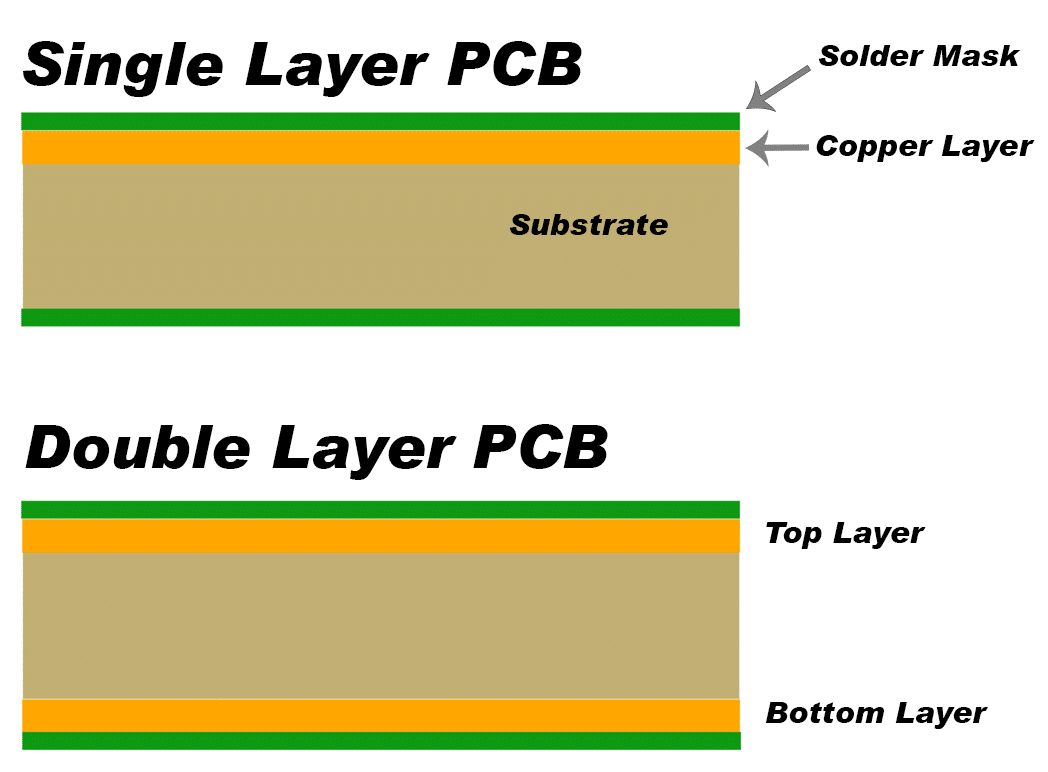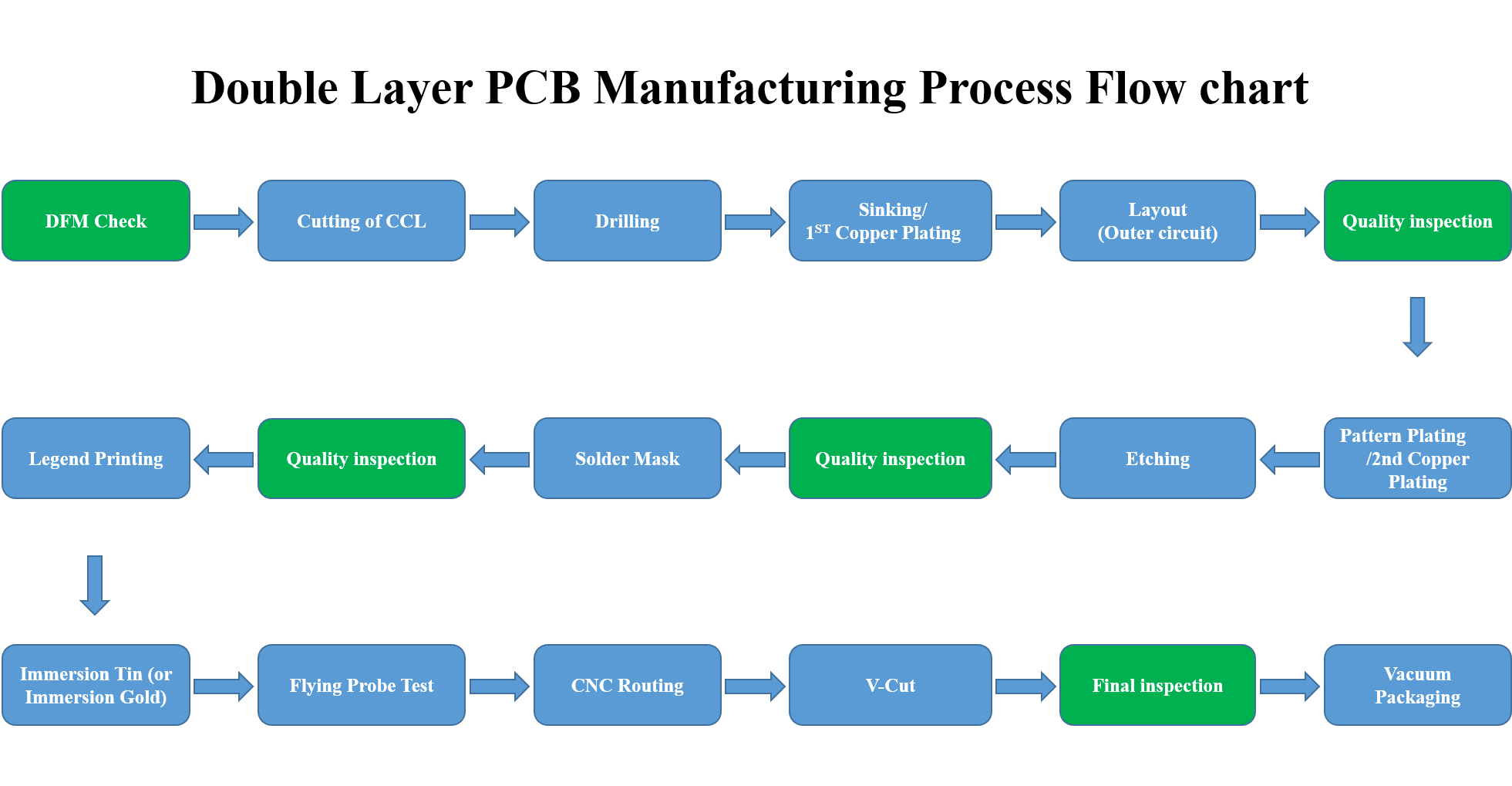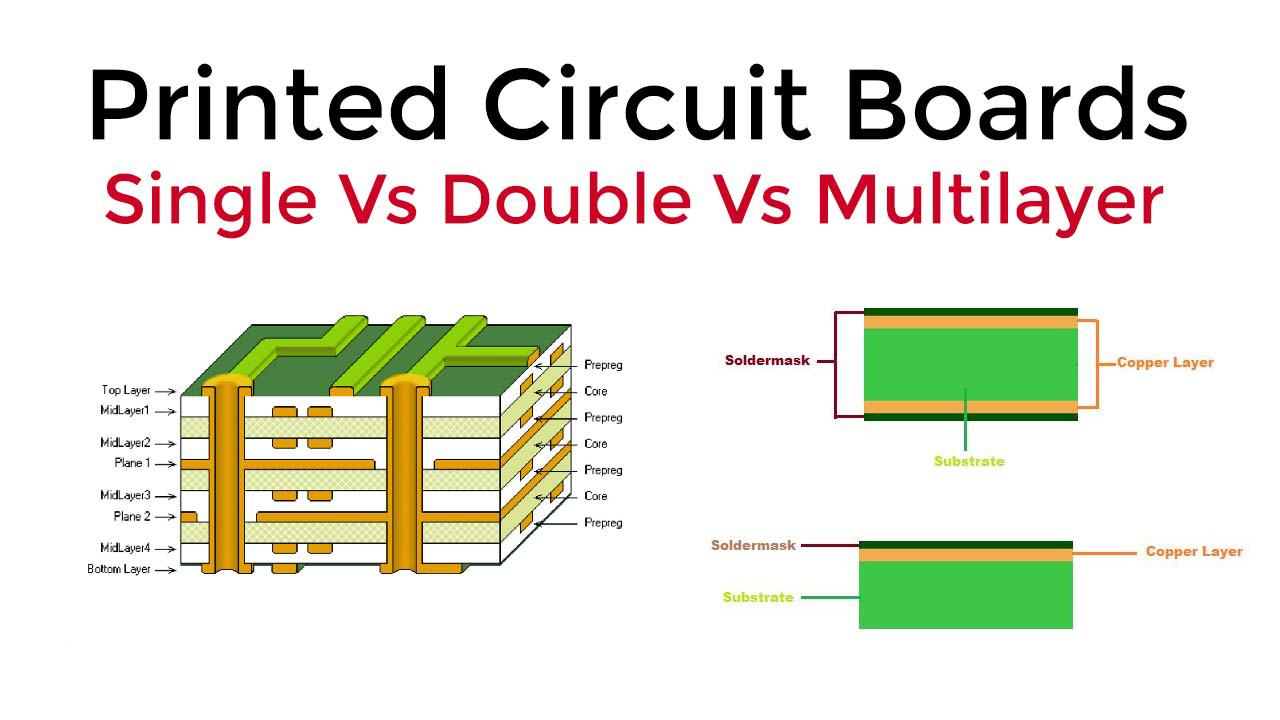Global high-mix volume high-speed PCBA manufacturer
9:00 -18:00, Mon. - Fri. (GMT+8)
9:00 -12:00, Sat. (GMT+8)
(Except Chinese public holidays)




Global high-mix volume high-speed PCBA manufacturer
9:00 -18:00, Mon. - Fri. (GMT+8)
9:00 -12:00, Sat. (GMT+8)
(Except Chinese public holidays)




HomePage > Blog > Knowledge Base > What is A Double-Sided PCB
Unlike their single-sided counterparts, double-sided PCBs offer a layering design that facilitates the integration of many components, enhancing electronic devices' overall functionality and efficiency. So, let's delve into the intricacies of double-sided PCBs, uncovering their significance, applications, and innovative technologies that propel them to the forefront of modern electronic engineering.

The process of making PCBs is intricate. After a few processes, the raw board becomes a double-sided PCB. So, brace yourself as we walk you through the double-sided PCB manufacturing process steps.

It all starts with schematic diagram design followed by PCB design. In this process, numerous PCB design programs are selected.
Once you finish the main design, you can begin designing the PCB layout. Then, print the PCB plan on glossy paper with a laser printer. However, remember to mirror the top layer layout's picture before printing the top layer. Otherwise, your circuit will be inverted.
However, when choosing a high-speed and high-frequency PCB, we suggest not using Fr-4 because it is inappropriate. In this regard, you can select high-frequency materials, including the RT5000/6000 series from Rogers, the TLX series from Tacanic, etc.
The process begins with cutting copper-clad laminate (CCL) sheets to the required size. CCL consists of a thin layer of copper foil laminated onto a non-conductive substrate. Precision in cutting ensures the proper dimensions for the upcoming steps.
Precise holes are drilled into the CCL to create the locations for vias and component holes. These holes are strategically placed according to the circuit design and will later facilitate the connection between the top and bottom layers of the PCB.
The drilled holes undergo electroless copper deposition. This involves coating the holes' interior with a thin layer of copper, creating a conductive pathway between the top and bottom layers. This process is crucial for establishing electrical connections in the final PCB.
A photoresist material is applied to the surface of the CCL. The circuit pattern is then printed onto the photoresist using a UV light-sensitive mask. Areas exposed to light undergo a chemical change, creating the pattern for the subsequent etching process.
A thin layer of copper is electroplated onto the exposed areas of the CCL, reinforcing the circuit pattern. This additional copper layer enhances the conductivity of the traces and prepares the board for the next steps.
Etching requires immersing the board in an acidic solution like ferric chloride. This solution chemically dissolves bare copper, leaving only photoresist-covered circuit traces and pads. After finishing, the board is thoroughly rinsed to remove etchant. Remove the developed photoresist to reveal the etched circuit pattern.
A computer-controlled system with high-resolution cameras takes detailed photos of the PCB surface during AOI. Next, powerful pattern recognition algorithms analyze these photographs. The AOI program systematically detects circuit pattern discrepancies by comparing collected images to intended design parameters.
Placing components and routing lines on both sides allows for a highly optimized double-sided PCB layout. It is possible to arrange components and circuitry to reduce wire lengths, lessen interference between traces, and adhere to emission regulations. Additionally, it is possible to divide the board's dense areas intelligently between the sides.
|
Feature
|
Single-Sided PCB
|
Double-Sided PCB
|
Multilayer PCB
|
| Definition | PCB with one layer of conducting material | PCB with two layers of conducting material | PCB with three or more layers of conducting material |
| Construction | One side for conducting material, and the other for components | Top and bottom layers for conducting material | Multiple layers of conducting material laminated |
| Complexity | Simple and basic | More complex than single-sided, but less than their multilayer counterparts | High complexity due to multiple layers and connections |
| Cost | Low cost | Moderate cost | Higher cost compared to single-sided and double-sided PCB boards |
| Applications | Camera systems, audio equipment, power supplies, calculators, solid state drives, printers, surveillance, etc. | LED lighting systems, vending machines, amplifiers, car dashboards, industrial controls, phone systems, etc. | Fiber optics, smartphones, GPS systems, scientific and space equipment, heart monitors, atomic accelerators, etc. |


Assembly Enquiry
Instant Quote